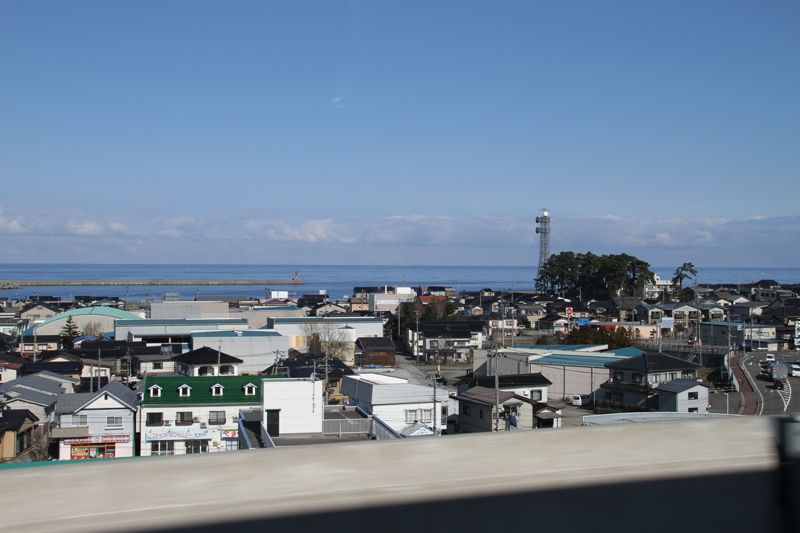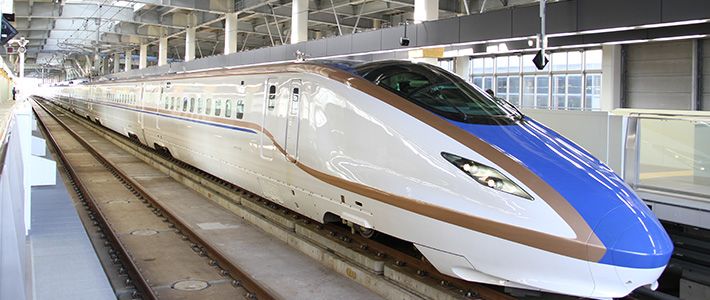
Hokuriku Shinkansen Set for March Launch
Society- English
- 日本語
- 简体字
- 繁體字
- Français
- Español
- العربية
- Русский
JR Unveils Its New Shinkansen
The new Hokuriku Shinkansen between Nagano and Kanazawa is scheduled to begin commercial service on March 14 this year. Ahead of the opening, press representatives were invited to a preview test run on February 5. A group of journalists boarded JR West’s new W7 train, specially developed for the upcoming opening, and took a round-trip ride from Kanazawa to Nagano.
The train left Kanazawa at 9:56 AM, slipping smoothly out of the station before accelerating quickly down the tracks. By the time the train passed through the first tunnel eight minutes into the journey it was already hurtling along, with hardly a shudder, at its top speed of 260 kilometers an hour.
The first stop on the test run was Toyama, reached after a leg of 25 minutes.
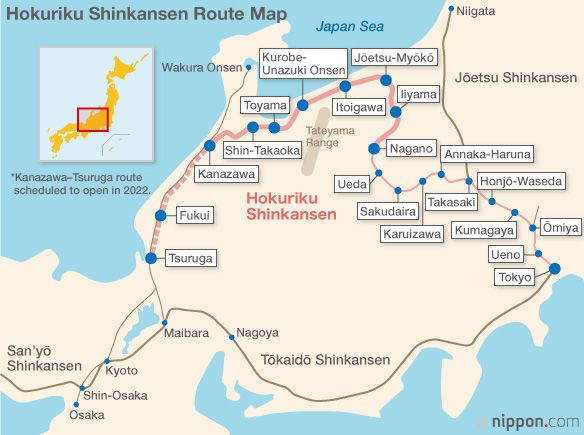
A Ride with a View
Compared to other sections of the newly built line—which consist of around 40% tunnels, according to JR West—the route in Toyama Prefecture passes largely through open areas, providing scenic views of the passing countryside. Winter riders in particular will be treated with spectacular glimpses of the snowy peaks of the Tateyama Range. (The best seats for mountain viewing are on the left side of the train heading from Tokyo to Kanazawa, and on the right when returning to the capital.)
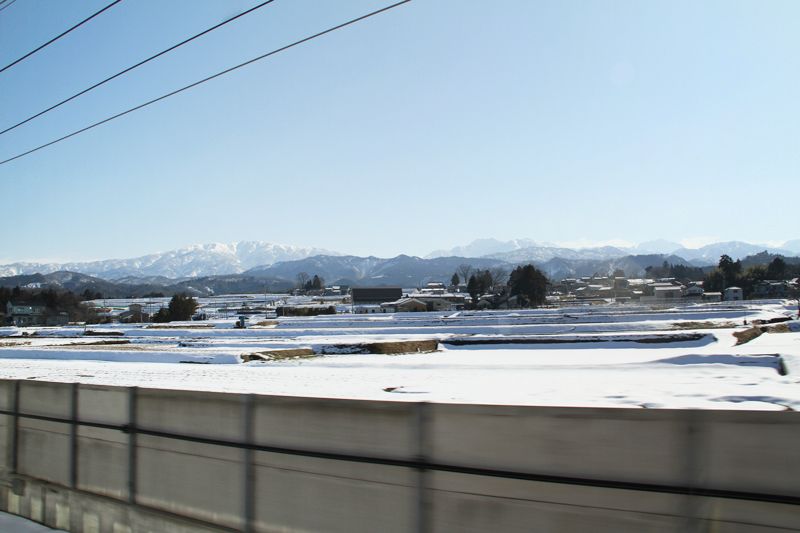 Tunnels become a regular feature as the line traverses the Tateyama foothills and passes through Oyashirazu in Niigata Prefecture, an area dominated by craggy peaks and sheer cliffs. Once through, however, travelers can enjoy a panoramic view of the Japan Sea near Itoigawa Station.
Tunnels become a regular feature as the line traverses the Tateyama foothills and passes through Oyashirazu in Niigata Prefecture, an area dominated by craggy peaks and sheer cliffs. Once through, however, travelers can enjoy a panoramic view of the Japan Sea near Itoigawa Station.
Past Itoigawa, the train leaves the sea behind and journeys through more tunnels as it skirts around Mount Myōkō. As the line moves inland, passengers traveling in the winter months can enjoy views of the famous “snow country” of Jōetsu.
The test run ended as the train passed through the line’s longest tunnel and entered Nagano Prefecture, making the trip to Nagano Station in 1 hour 34 minutes.
A Japanese Vision of the Future
Opened ahead of the Nagano Winter Olympics in February 1998, the Nagano Shinkansen, precursor to the Hokuriku Shinkansen, began its service between Takasaki and Nagano in October 1997. The change of name that accompanies the extension of the service to Kanazawa signals the Shinkansen’s penetration into the northern Hokuriku region. The new service shares a section of track with the Jōetsu Shinkansen, and although it will run directly from Tokyo to Kanazawa, administrative boundaries in place since the privatization and division of the old Japan National Railways in April 1987 mean that JR East has jurisdiction from Tokyo to the newly built Jōetsu-Myōkō Station, while JR West is in charge for the remainder of the route. The Hokuriku Shinkansen will be run as a partnership between the two providers, with a change of driver and train attendants taking place at Nagano Station.
The new W7 train used on the test run was also developed jointly by JR East and JR West. The design comes from Okuyama Kiyoyuki—better known overseas as Ken Okuyama, the first non-Italian to design a car for famed sports-car manufacturer Ferrari.
The aim was to combine traditional Japanese notions of beauty with the elegance of the latest technology. The ivory white train is adorned with striking bands of blue, to represent the Hokuriku skies, and copper, in reference to the bronzeware and damascening for which the areas through which the train passes are known.
The walls, seats, and other facets of the interior of carriages were fashioned to reflect various aspects of the Hokuriku region. “We wanted to convey a sense of the region to travelers,” says Tanaka Norikazu, who heads the JR West division in charge of train carriages. “To do so we infused trains with a blend of patterns and color tones associated with the traditional craftworks of Kanazawa, Toyama, and Takaoka.”
A Luxury Carriage Class
The train’s 12 carriages will be divided among three classes. The “Gran Class” car at the front features 18 spacious seats that may seem familiar to those who regularly fly executive-class. Shinkansen carriages, already wider than most trains, typically feature four or five columns of seats. Passengers in this car, though, will have plenty of extra room to relax, with automated reclining leather seats, each with a footrest and reading lamp, arranged in just three columns.
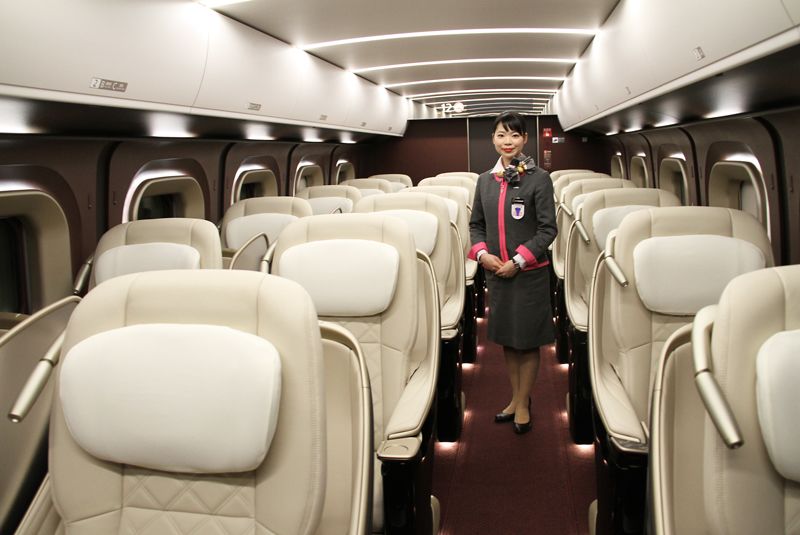 The luxury of Gran Class does not end with the seats. Dedicated attendants will be on hand to serve light meals prepared from seasonal, locally sourced produce, as well as regional specialty drinks, reading materials, and other complementary items, including slippers and eye masks.
The luxury of Gran Class does not end with the seats. Dedicated attendants will be on hand to serve light meals prepared from seasonal, locally sourced produce, as well as regional specialty drinks, reading materials, and other complementary items, including slippers and eye masks.
Even the standard class cars comprising most of the 12 carriages exceed the already high level of comfort that Shinkansen riders are used to. The space between seat rows is 6 centimeters wider than on the trains servicing the Tokyo–Nagano route. In a first, each seat is fitted with its own power socket, allowing passengers to charge phones, laptops, or other electronic items as they travel.
The bathrooms have also received plenty of attention. Every other carriage features “washlet” style toilets with heated seats, and the train is also equipped with two wheelchair-friendly restrooms.
Bringing Tokyo and Kanazawa Closer Together
With no direct service until now connecting Tokyo with Toyama and Kanazawa, previously such trips had required considerably more time, as well as transfers from the Jōetsu Shinkansen to the express services of local train lines. The opening of the Hokuriku Shinkansen will cut the journey from Tokyo to Kanazawa from four hours to two and a half, while travel time from Tokyo to Toyama will be slashed from three hours to just two, a development awaited with much anticipation by the businesses and residents of the Hokuriku region.
The opening of the Shinkansen route is expected to bring 5 million visitors annually to Ishikawa Prefecture from Tokyo and surrounding prefectures, and local tourism officials hope that yearly numbers of foreign visitors will nearly double to 500,000. Travelers can utilize an existing express service that links Kanazawa and Kyoto along with the high-speed train when planning their itineraries. According to Ōnishi Hiroaki of Ishikawa Prefecture’s International Tourism Division, “We hope to push the route linking Tokyo, Kanazawa, and Kyoto as a new golden corridor for tourism.”
Neighboring Fukui Prefecture is also optimistic that the Hokuriku Shinkansen will boost tourism to the area. “We want to attract more visitors from the Tokyo area,” says Nakaya Takahiro, a municipal employee at Kanazawa Station to promote the Fukui town of Eiheiji, which takes its name from a famous Zen temple located there.
Local Communities Betting on the New Line
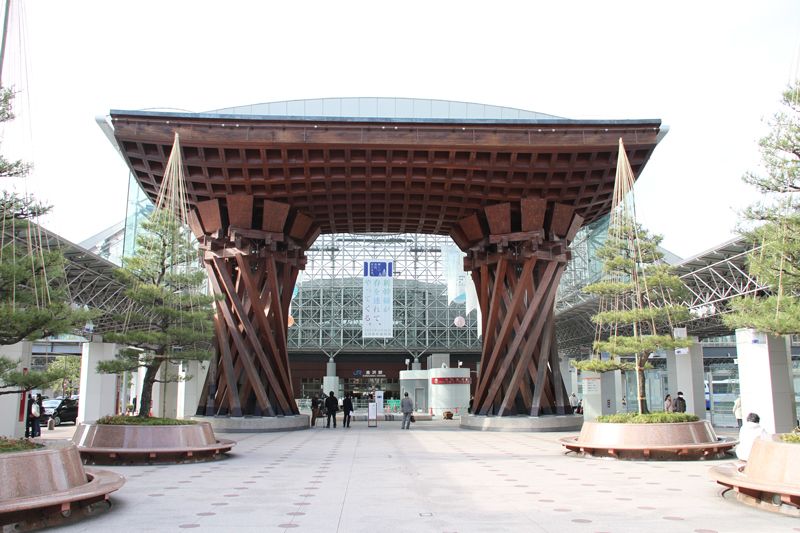 US travel magazine Travel & Leisure selected Kanazawa among the world’s most beautiful train stations.
US travel magazine Travel & Leisure selected Kanazawa among the world’s most beautiful train stations.
A substantial amount of work has gone into preparing Kanazawa Station for the new service, including the construction of the all-glass Motenashi Dome and wooden Tsuzumi gate. Special attention was given to displaying traditional craftworks from the region. Information boards along the walkway to the shinkansen gate feature ornately printed cloth of the Kaga yūzen design and handmade Futamata washi paper. The waiting room displays Kutani pottery and Wajima lacquerware. In all there are 30 varieties of craftworks represented with 236 pieces on display.
It has cost the prefecture and local governments ¥83 billion to bring the Shinkansen to the area, but residents are hopeful the train will prove a worthwhile investment.
Amid the fanfare, local municipalities face many critical issues, such as how to ensure the economic viability of local train lines. Going forward, it remains to be seen what effect the Shinkansen will have on communities in the region. Local authorities will be watching tourist numbers closely.
▼Further reading
 Hokuriku Shinkansen Guide: Routes, Trains, Seating, and Fares Hokuriku Shinkansen Guide: Routes, Trains, Seating, and Fares |
 Shinkansen Route Map Shinkansen Route Map |
 The Shinkansen Turns 50: The History and Future of Japan’s High-Speed Train The Shinkansen Turns 50: The History and Future of Japan’s High-Speed Train |
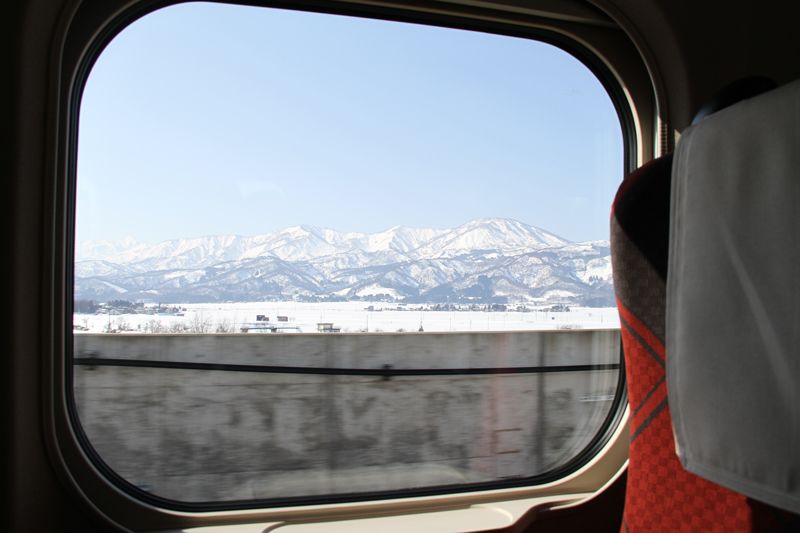
Snow-covered mountains near Jyōetsu-Myōkō Station.
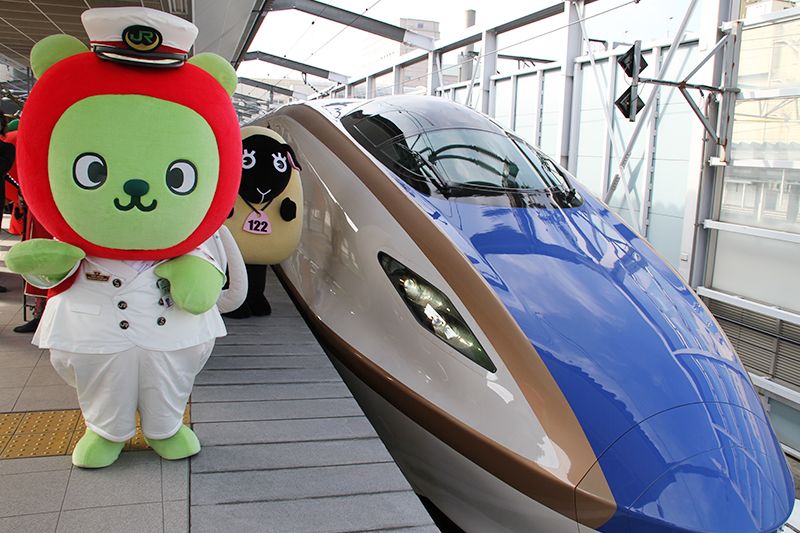
Nagano Tourism Agency PR character Arukuma greets passengers at Nagano Station.
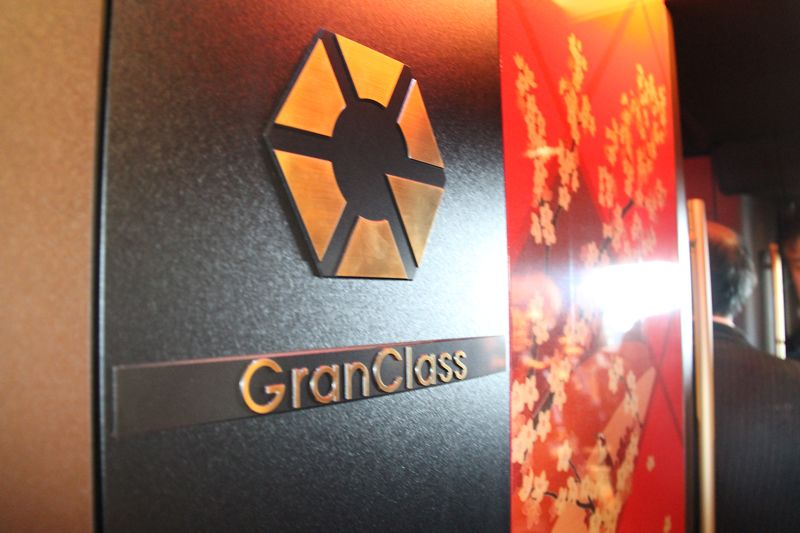
A panel on the deck of the Gran Class carriage.
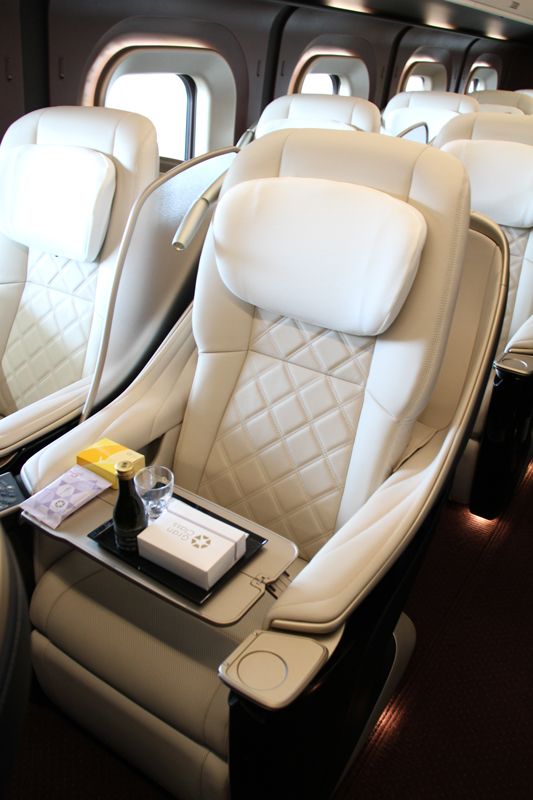
Gran Class seats come with a light meal and complimentary drink.

The color of seats in the business-class Green Car are said to reflect the famous Kanazawa garden of Kenrokuen.
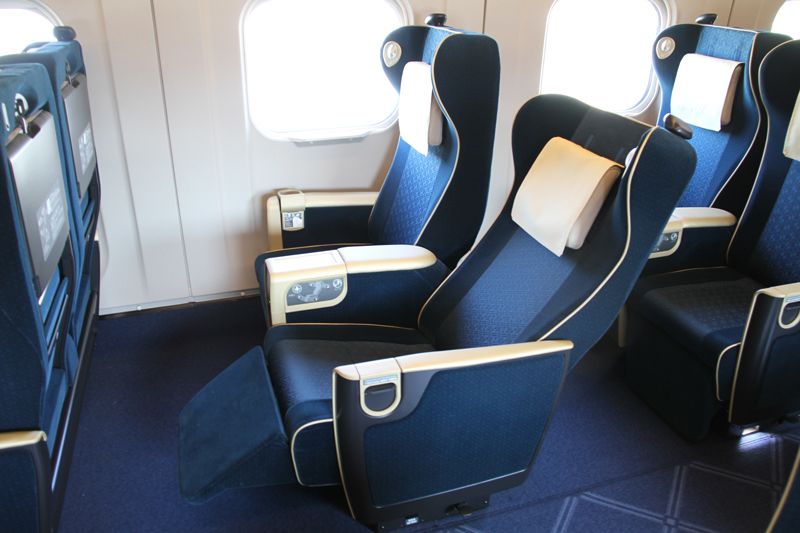
Business-class Green Car carriages feature motorized reclining seats.
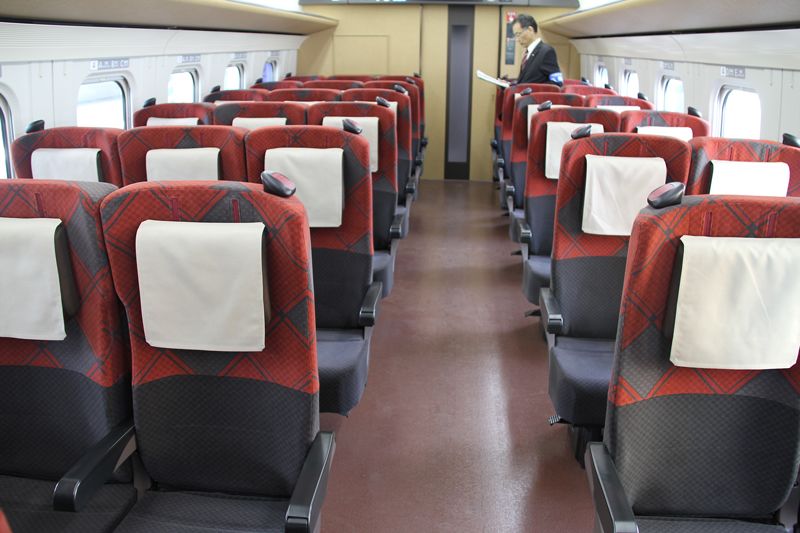
Standard-class carriages feature vermillion and check-patterned seats.
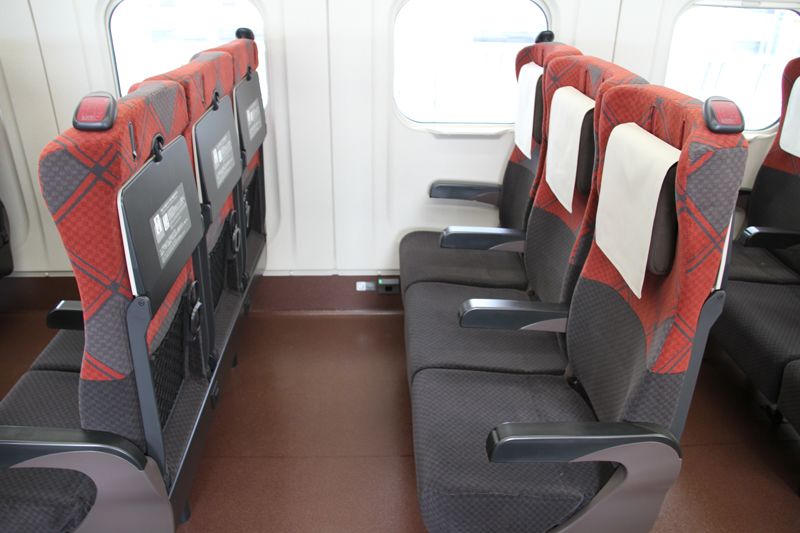
Standard-class seats on the Hokuriku Shinkansen give travelers 6 centimeters more legroom.
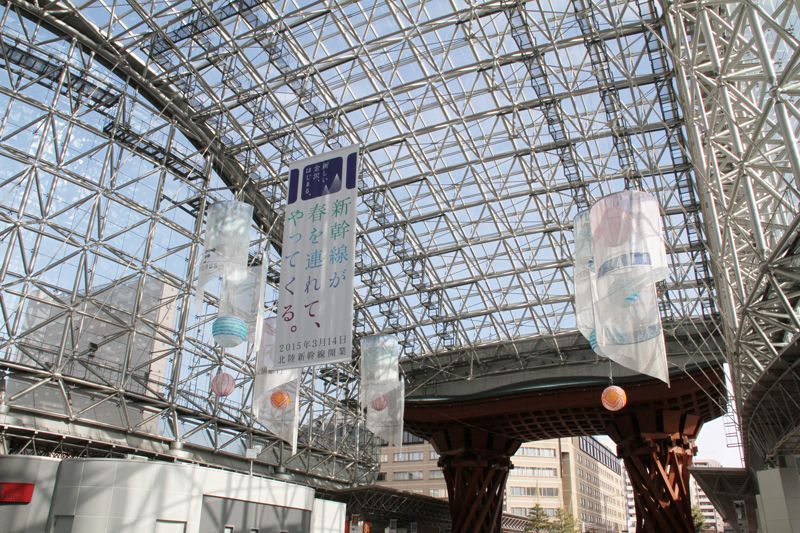
The interior of Kanazawa Station’s Motenashi Dome.
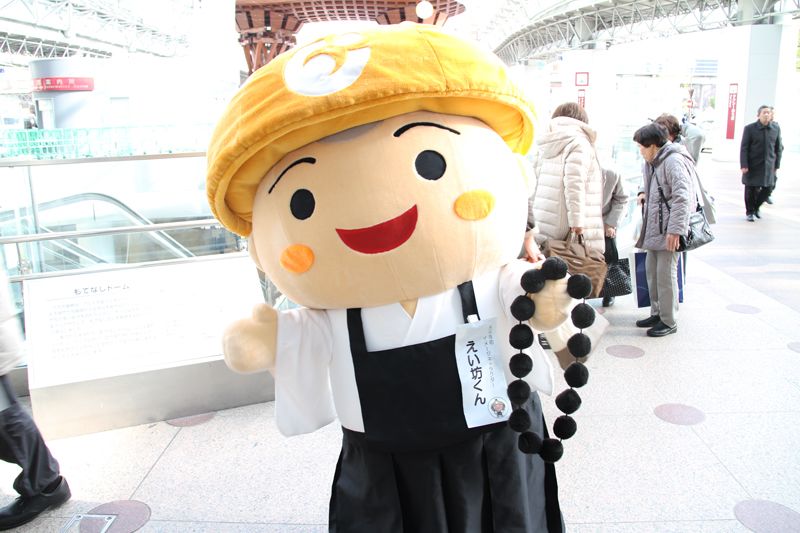
Eibō-kun, the town mascot of Eiheiji in neighboring Fukui Prefecture, greets passengers.
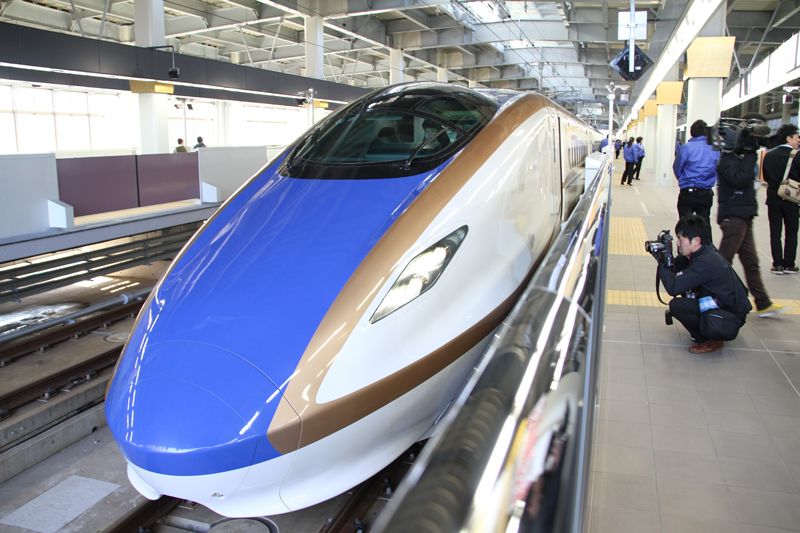
The lead carriage of the Hokuriku Shinkansen.
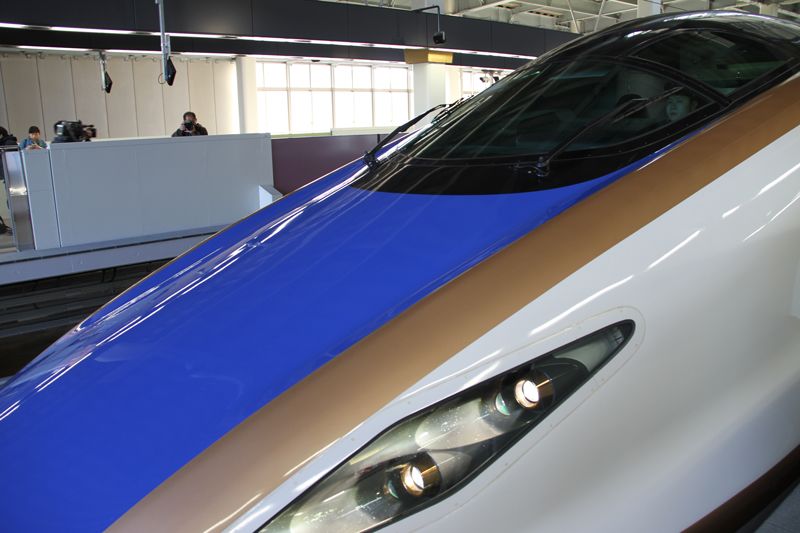
The W7 series Shinkansen waits at Kanazawa Station.
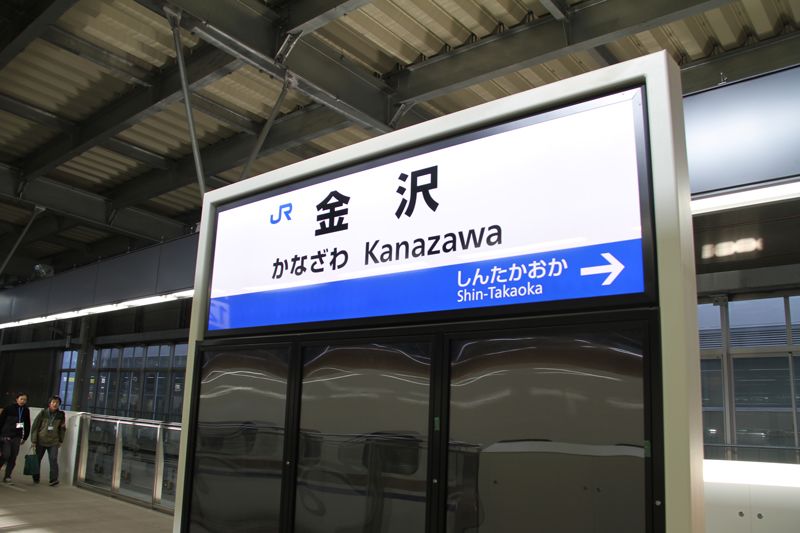
A newly unveiled platform sign at Kanazawa Station.
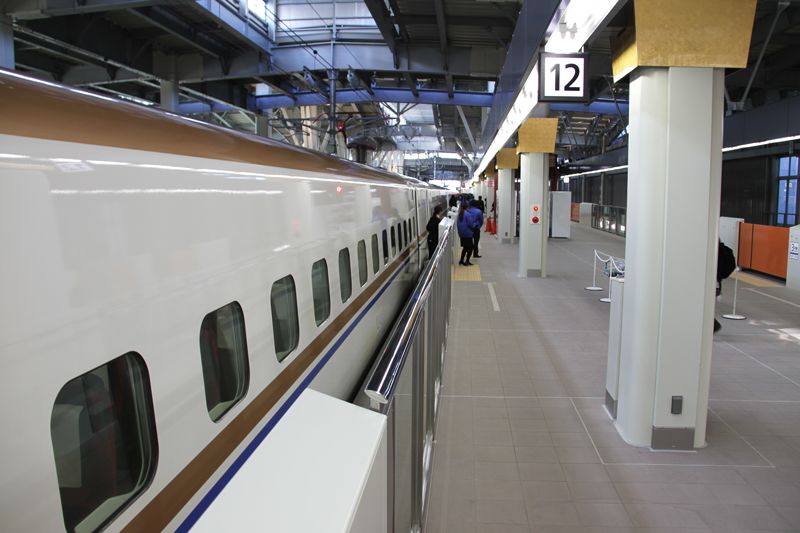
Gold leafing on pillars provides a local touch to the platform.
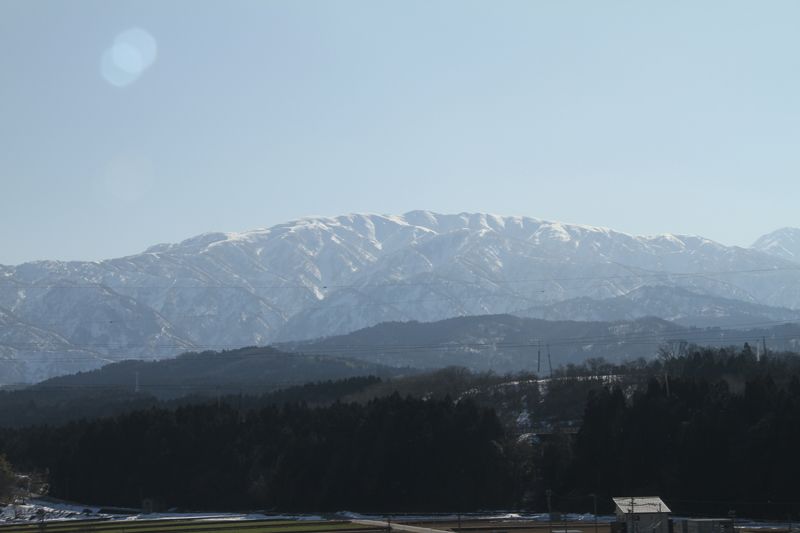
The Tateyama Range as seen from the Hokuriku Shinkansen.

The waiting room at Kurobe-Unazuki Onsen Station affords a view of the Hida Range.
Kanazawa Shinkansen transportation Toyama Ishikawa Tateyama Fukui Hokuriku Shinkansen trains
